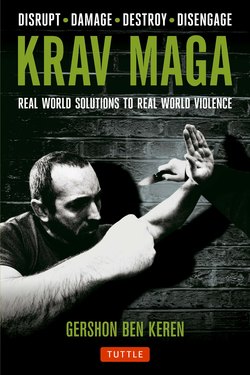Читать книгу Krav Maga - Гершон Бен Керен - Страница 5
На сайте Литреса книга снята с продажи.
ОглавлениеPreface
I am foremost a martial artist. I say this because many people are under the impression that Krav Maga is little more than a collection of self-defense techniques that stresses function over form. Depending on the audience being taught, this may be the case—if you have three days to train a military unit who is getting ready to deploy, you are not going to spend time teaching them all of the subtleties and nuances of striking, blocking, etc. You are going to teach them the fundamentals, and rely on aggression and determination to fill the gap. However, where there is the opportunity to devote a longer period of time to training, then effort can be spent learning how to strike more efficiently, to move more effectively, and to place yourself in more advantageous positions, etc. This is where Krav Maga starts to become more than simply a military combatant system, and progresses towards being a full-fledged martial art.
I am a strong believer in the development of fighting skills and attributes, rather than simply learning techniques. If you are unfortunate enough to be attacked by a knife-wielding assailant, it is not your knowledge of a technique that will allow you to successfully defend yourself, but your ability to control range, dictate the movement of the fight, and have the necessary speed, movement, and timing to block, control, and dispatch your assailant. Too many times people believe in their ability to defend themselves because they “know” the appropriate technique to do so. This book contains the techniques—the knowledge—but to use it successfully, everything in it must be practiced, and then tested under high stress and duress.
My choice of techniques to present was based on the desire to explain some of the fundamentals of the Krav Maga system I teach, and show certain ideas which are contained in it; such as the reuse of movements, and the similarities between dealing with knife and gun. I describe some of the dynamics and situational components of violence so that you can gain a better idea of what real world violence looks like. I am also a great believer that much of the violence that targets the individual can be predicted, identified, and avoided—and I have tried to bring this out in some of the scenarios that are described.
When we shot the photographs for the book, we made the decision to shoot them in real time, as we wanted to express the movement and dynamism that exists in a real life conflict. This process involve photographing techniques demonstrated at full pace, and full force, over and over again, and then selecting individual photographs from the over 10,000 that we took, to get “snapshot” moments that illustrated a particular part of the technique. None of the photos you see in the book were staged, or performed statically. As painful and as time consuming as this process was, I believe it gives a much better idea of what violence and the responses to it look like, as well as allowing you to have faith and conviction that the techniques described actually work.
We also made the decision to try to shoot, where possible, in the situations/scenarios where certain assaults and threats are likely to occur, e.g., at ATMs, in bars, etc. This will help you visualize the techniques and the attacks more clearly, and give a more realistic context to them.
Krav Maga Yashir is a systematic approach to self-defense, not merely an encyclopedia of techniques. There are common movements, ideas, and principles that are shared by every technique in the system. If you truly understand one technique, you understand them all, and by understanding them, you will be able to create solutions and responses to attacks that you have never trained for or experienced before. This, for me, is the pinnacle of Krav Maga training.
I am a full time Krav Maga instructor, and there are very few days when I am not on the mats teaching and/or training. The system I teach continues—and will always continue—to evolve, and I am grateful to my instructors in Israel and in the U.S., who continue to extend my experiences and knowledge, so that I can better provide my students with the solutions that they need to survive real world violence. My hope is that this book will go a long way towards communicating this same teaching, and that it will improve your survival chances should you ever find yourself in a potentially violent situation.
OSS/Respect
Gershon Ben Keren
